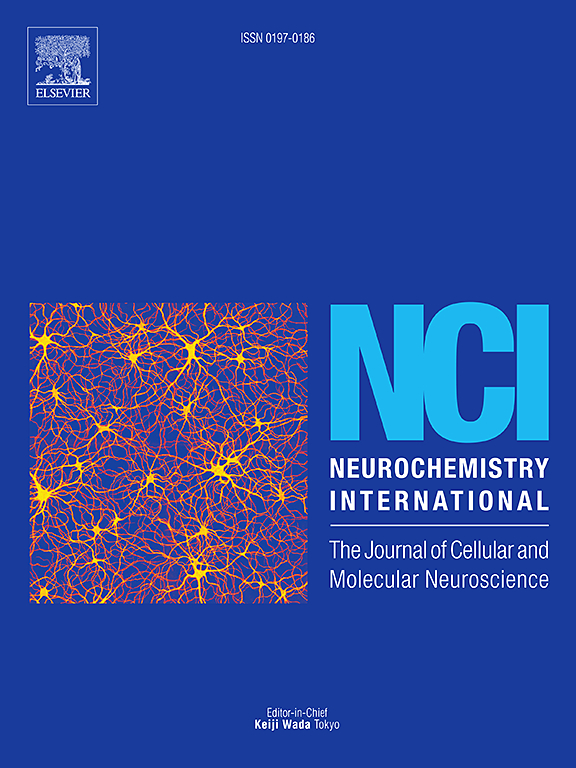RNA测序分析确定了雌性和雄性大鼠在停止自我给药后背纹状体转录特征的性别差异
IF 4
3区 医学
Q2 BIOCHEMISTRY & MOLECULAR BIOLOGY
引用次数: 0
摘要
甲基苯丙胺(冰毒)引起的显著行为差异存在于人类和其他动物的两性之间。这些差异可能与脑奖赏神经解剖通路的基本分子和生化机制中的两性二态性有关。作为鉴定甲基苯丙胺诱导的转录特征的性别差异的第一步,我们使用RNA测序分析来测量自我给药的大鼠背纹状体基因表达的全基因组变化。我们训练大鼠自我给药(0.1 mg/kg/静脉注射),每天两次,每次3小时(每次之间间隔30分钟),持续20天。对照组大鼠在相同条件下自行给予生理盐水。随后在停药第3天(WD3)和第30天(WD30)进行药物寻找测试。行为学结果显示,雄性大鼠比雌性大鼠服用更多的冰毒。在雄性和雌性老鼠中,一些动物在行为实验中增加了(高摄入量),而另一些动物没有增加(低摄入量)他们的冰毒摄入量。第二次寻药试验24 h后对大鼠实施安乐死。从背纹状体(dSTR)中提取RNA,用于RNA测序分析。数据确定了雌性和雄性对照大鼠之间基因表达的基本差异。此外,甲基安非他明的使用和戒断与纹状体基因表达变化的显著性别相关差异相关,改变的mrna的重叠最小。因此,目前的结果为甲基安非他明暴露的两性二态反应提供了进一步的支持证据。这些观察结果支持了性别特异性治疗甲基苯丙胺使用障碍患者的观点。本文章由计算机程序翻译,如有差异,请以英文原文为准。
RNA sequencing analysis identifies sex differences in transcriptional signatures in the dorsal striatum of female and male rats after withdrawal from methamphetamine self-administration
Significant methamphetamine (METH)-induced behavioral differences exist between the two sexes of humans and other animals. These dissimilarities may be related to sexual dimorphism in baseline molecular and biochemical mechanisms in brain reward neuroanatomical pathways. As a first step towards identifying sex-based differences in methamphetamine-induced transcriptional signatures, we used RNA sequencing analysis to measure genome-wide changes in gene expression in the dorsal striatum of rats that had self-administered METH. We trained rats to self-administer METH (0.1 mg/kg/infusion, i.v.) using two 3-hr daily sessions (with 30 min time out between sessions) for 20 days. Control rats self-administered saline under similar conditions. This was followed by drug seeking tests on withdrawal days 3 (WD3) and 30 (WD30). Behavioral results show that male rats took more METH than female rats. In both male and female rats, some animals escalated (high-takers) whereas others did not escalate (low-takers) their METH intake during the behavioral experiment. Rats were euthanized 24 h after the second drug seeking test. RNA was extracted from the dorsal striatum (dSTR) and used in RNA sequencing analysis. The data identified substantial baseline differences in gene expression between female and male control rats. In addition, METH use and withdrawal were associated with significant sex-related differences in changes in striatal gene expression, with minimal overlaps of altered mRNAs. Thus, the present results provide further supporting evidence for sexually dimorphic responses to METH exposure. These observations support the notion of sex-specific approaches to the treatment of patients who suffer from METH use disorder.
求助全文
通过发布文献求助,成功后即可免费获取论文全文。
去求助
来源期刊

Neurochemistry international
医学-神经科学
CiteScore
8.40
自引率
2.40%
发文量
128
审稿时长
37 days
期刊介绍:
Neurochemistry International is devoted to the rapid publication of outstanding original articles and timely reviews in neurochemistry. Manuscripts on a broad range of topics will be considered, including molecular and cellular neurochemistry, neuropharmacology and genetic aspects of CNS function, neuroimmunology, metabolism as well as the neurochemistry of neurological and psychiatric disorders of the CNS.
 求助内容:
求助内容: 应助结果提醒方式:
应助结果提醒方式:


